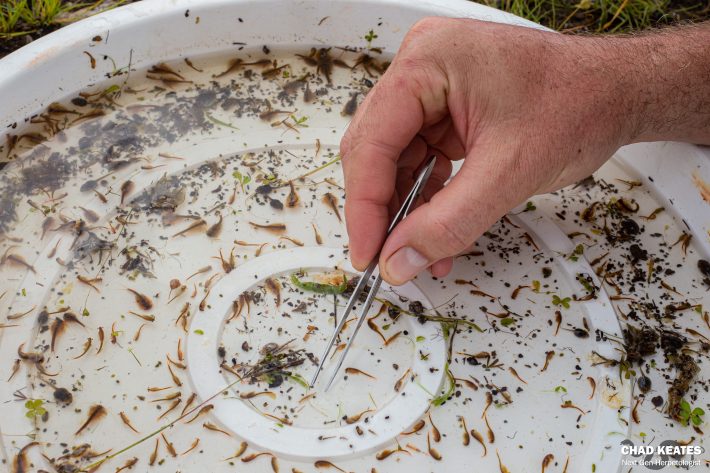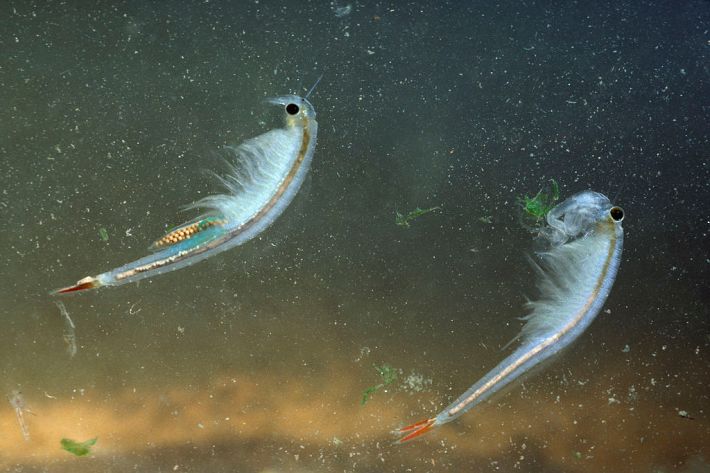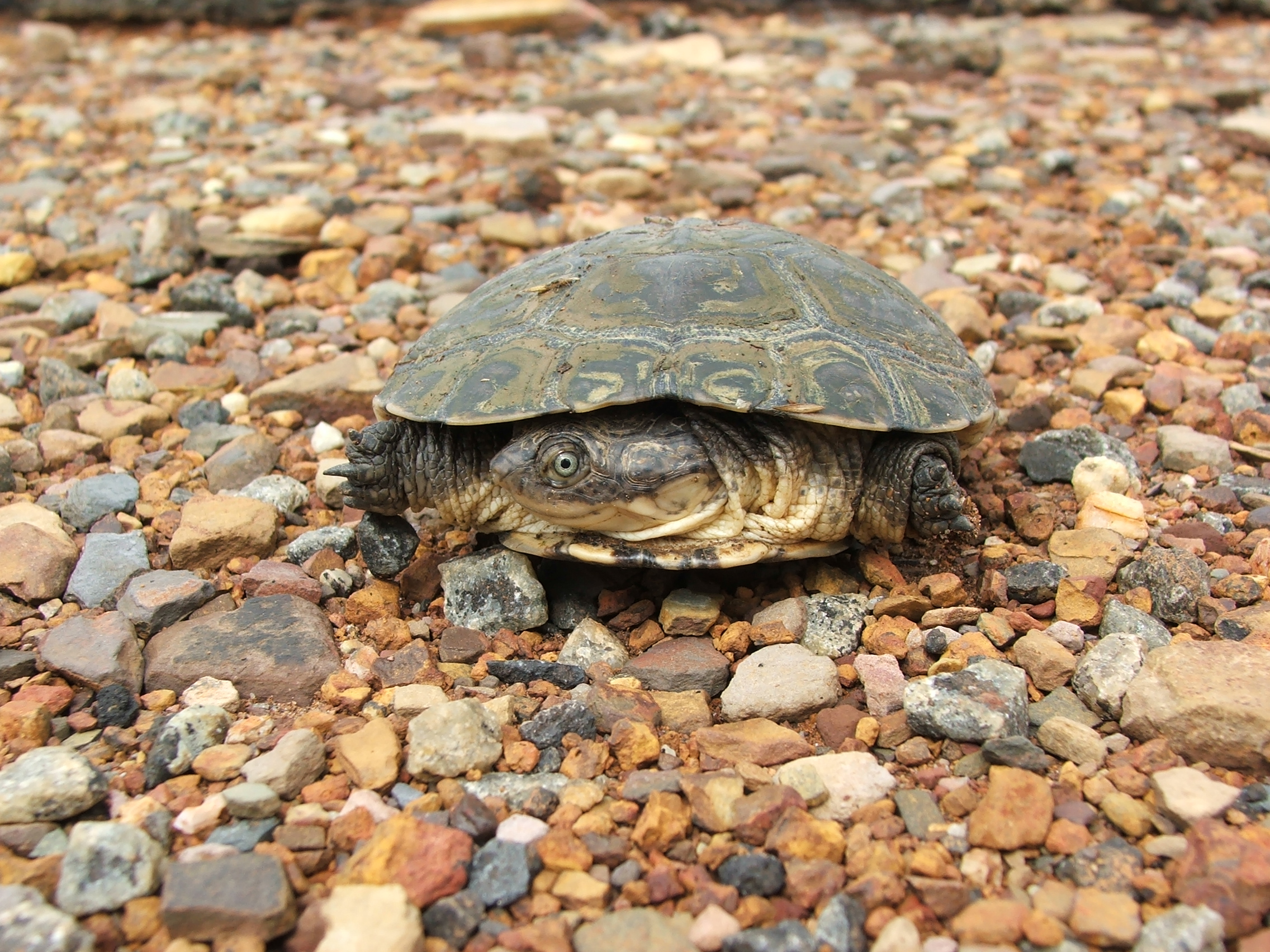Fairy shrimp live and die by the rain. The tiny aquatic crustaceans live in blips of wetlands—pools conjured by seasonal showers. While these pools linger, they swarm with fairy shrimps, which hatch, feed, mature, and spawn, releasing clouds of minute eggs that settle in the murk at the bottom, eventually drying up with the pool. These eggs lay dormant, dried out or frozen over, until the rains return and the eggs hatch into the fluttering, apostrophe-shaped crustaceans. Sprinkling eggs in a pool guarantees the fairy shrimps' return. But on their own, the crustaceans have no means of crossing dry land to colonize new wetlands. In an archipelago of isolated pools, how did they get there in the first place?
In 2019, Ryan Wasserman, an aquatic ecologist at Rhodes University in South Africa, noticed a turtle called a marsh helmeted terrapin lounging in a pool filled with fairy shrimp. "I returned to the same rockpool the next day to show a student what I had seen, only to find that the terrapin was no longer present and most of the fairy shrimp were missing," Wasserman wrote in an email. He wondered: Could a turtle be a taxi, ferrying future generations of fairy shrimp across a mosaic of African wetlands? He and colleagues investigated this question in a paper recently published in the journal Ecology.
Zoochory, or the dispersal of other species by animals, is largely thought of in regard to plants: burrs cling to the furry coats of goats; toucans swallow nutmeg fruits and spit out the seeds elsewhere in the forest. But zoochory is not restricted to plants; animals, too, can stow away in other animals. Tardigrades scoot around in snail guts and microscopic nematodes hitch rides on earthworms. Carnivorous diving beetles zoom from ephemeral pool to ephemeral pool after sucking up fairy shrimp and their eggs, which they later defecate. Semiaquatic turtles, which rove around the land in search of water, seemed an obvious route for fairy shrimp egg dispersal.

While working on another project on temporary wetlands on the borders of Botswana and South Africa, Wasserman observed large numbers of helmeted turtles occupying pools brimming with fairy shrimp. These wetlands are largely unmapped due to their ephemeral nature. "In many parts of the country one needs to do lots of exploring to find the mosaics," he said. The researchers hauled a seine net through the wetlands and sampled all the turtles they managed to nab. The turtles appeared to come in two size groups, with some as long as popsicle sticks and others as long as printer paper.
Checking to see if a turtle has recently consumed fairy shrimp is almost a ridiculously easy process, mostly facilitated by the turtle in question. "I have handled terrapin before and observed that they urinate and defecate readily when picked up," Wasserman said. "I assume this is an anti-predator response of some sort." So the researchers simply picked up the turtles, collected their poops in Ziploc bags, and released the reptiles back into the wetland. The process took less than a minute per turtle.
The researchers then dried the feces and crushed the logs to examine under a dissecting microscope. "Fairy shrimp eggs are relatively large and conspicuous," Wasserman said, adding that the eggs can have distinct features that make them identifiable as a certain species'. They found fairy shrimp eggs belonging to two species in eight small turtles and two big turtles. To the researchers' surprise, the smaller turtles' poops contained a much higher density of fairy shrimp eggs than the bigger turtles. The researchers suspect the turtles consumed the eggs by eating sexually mature adult females, which carry bouquets of viable eggs in their brood pouches.

Unsure if these hastily excreted eggs could even hatch, the researchers prepared a hatching solution with distilled water and gently plopped the dormant eggs into the solution. The small turtles' poops, it turned out, were a goldmine of baby shrimp. About two-thirds of the eggs from one fairy shrimp species hatched successfully, and about a third of the eggs from the other species hatched successfully. None of the eggs from the bigger turtles managed to hatch, which the researchers speculate could mean that the gut conditions of bigger turtles are more hostile to egg viability.
The researchers hope to track how small and big turtles move across these wetlands, monitoring how many fairy shrimp they eat and how many fairy shrimp eggs they poop, to understand what role the turtles play in the crustaceans' dispersal. If smaller turtles are moving the majority of viable fairy shrimp eggs, their travel could be affected by turtle hierarchies—smaller individuals being forced to trek farther in search of unoccupied pools. Even if the shrimps that hatch from these eggs have vanishingly short lives, as eggs they may have traveled a long, long way to reach their pool and been unceremoniously catapulted from a cloaca before they were even born. And how many shrimps can say that?





